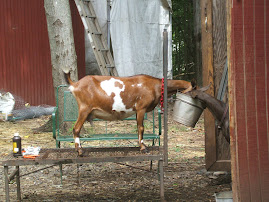This time of year is very special when it comes to cheese. As the weather turns cold, my appetite moves toward richer, heartier flavors. The time for fresh goat’s milk cheese has been replaced by a craving for fondue and raclette. This time of year is wonderful for cow’s milk cheeses that have matured for 12 or 24 months and the best surface ripened cheeses of the year. Surface ripened cheese will soon start to ooze their delicious creaminess. I like to think of this time of year as the running of the cheese.
Surface ripened cheeses are called surface ripened cheese because they ripen from the outside into the center of the paste. They can also be called soft ripened cheese as they are soft when ripe. The soft ripened family includes double and triple crème cheese. Double crème cheeses contain over 60% fat in the solid matter and triple crème is over 70% fat in the solid matter. Saint Andre is a triple crème and Chaource is a double crème cheese. These rich creamy cheeses may seem like a sinful indulgence but are no worse than any other cheese. One ounce of brie has 8 grams of fat and one ounce of cheddar has 9 ½ grams of fat.
So why is this the best time of year for soft ripened cheese? The answer is in the milk and what the animals were eating. A chunk of Brie you buy today may have been made in September. What were the cows doing in September? They were out grazing on lush summer pastures and eating some of the best grasses and wildflowers of the season. The animal’s diet will affect the flavors of the cheese.
Toward the end of summer, the animals reach the end of their lactation cycle and prepare for a new breeding season. The animals will produce less milk but this milk is more concentrated in protein and butterfat. Milk is composed of water, butterfat, lactose and proteins. The butterfat and protein are very important to cheese making as they give flavor. The butterfat content of milk will be higher towards the end of an animal’s lactation period. This means excellent milk to make cheese. Summer milk has been found to have higher amounts of beneficial antioxidants, fatty acids, and vitamins.
I personally drive out to a farm every week to pick up milk. I notice my milk will stay fresh longer in the summer and in winter it can go bad before my next weekly trip to the farm. Summer milk also tastes better and some cheeses are made only using summer milk. A French study of Alpine Gruyere found more flavor compounds in the cheese made with summer milk. Summer may be over but we can still enjoy the flavors of summer in soft ripened cheeses.
To make a surface ripened cheese, the milk is inoculated with bacteria or the curds are placed into a mold and then sprayed with bacteria. These bacteria will develop a soft downy mold on the outside of the cheese. It can take a few weeks for the rind to develop a nice downy sweater of mold. These cheeses are usually available a few weeks after they are made and will continue to ripen as they age.
Mold is a wonderful and important part of the cheese making process. The mold on soft-ripened cheeses will help the cheese ripen from the outside in. The bacteria in the mold will break down the fat and protein within the cheese. This is what makes cheese alive, the fact that there are bacteria digesting the cheese to help the cheese achieve its optimal taste and texture. The mold forms a natural edible rind and imparts flavor to the cheese. You can eat the rind of any cheese as long as it is not wax, wood, or leaves. Weather you enjoy the taste of the rind is up to you.
When you look at a soft ripened cheese, notice the area between the rind and the paste. This area is called the creamline and shows the breakdown of fat and protein. Once the creamline becomes darker and starts to ooze, you know that cheese is ripe and ready to eat at its peak. Surface ripened cheese will be ripe when there is no flaky center and they are soft and moist. If you press the rind, the mark will slowly spring back.
Soft ripened cheeses can be enjoyed on their own, on a cracker or bread but they can also be used in a salad and you can also cook with these cheeses. They compliment meat and poultry and impart a rich smoothness to sauces. They can top a pizza and melt well. Their flavors can be enhanced by the proper beverage. The richness of soft ripened cheeses requires a good amount of acidity to cut the fat. Champagne and sparkling wines have a nice acidity but even better than acidity, they have bubbles. These bubbles act as scrubbers and will clean away the richness from the cheese and cleanse the palate. These cheeses will also pair well with a hard cider, Pinot Noir, and Chardonnay.
Monday, November 2, 2009
Subscribe to:
Post Comments (Atom)
























No comments:
Post a Comment